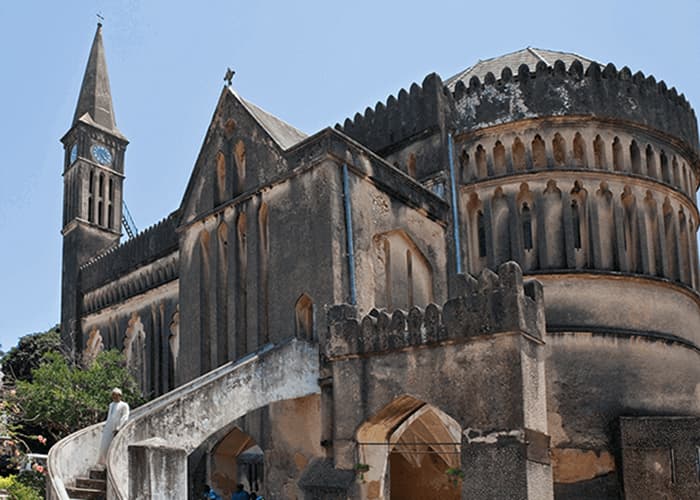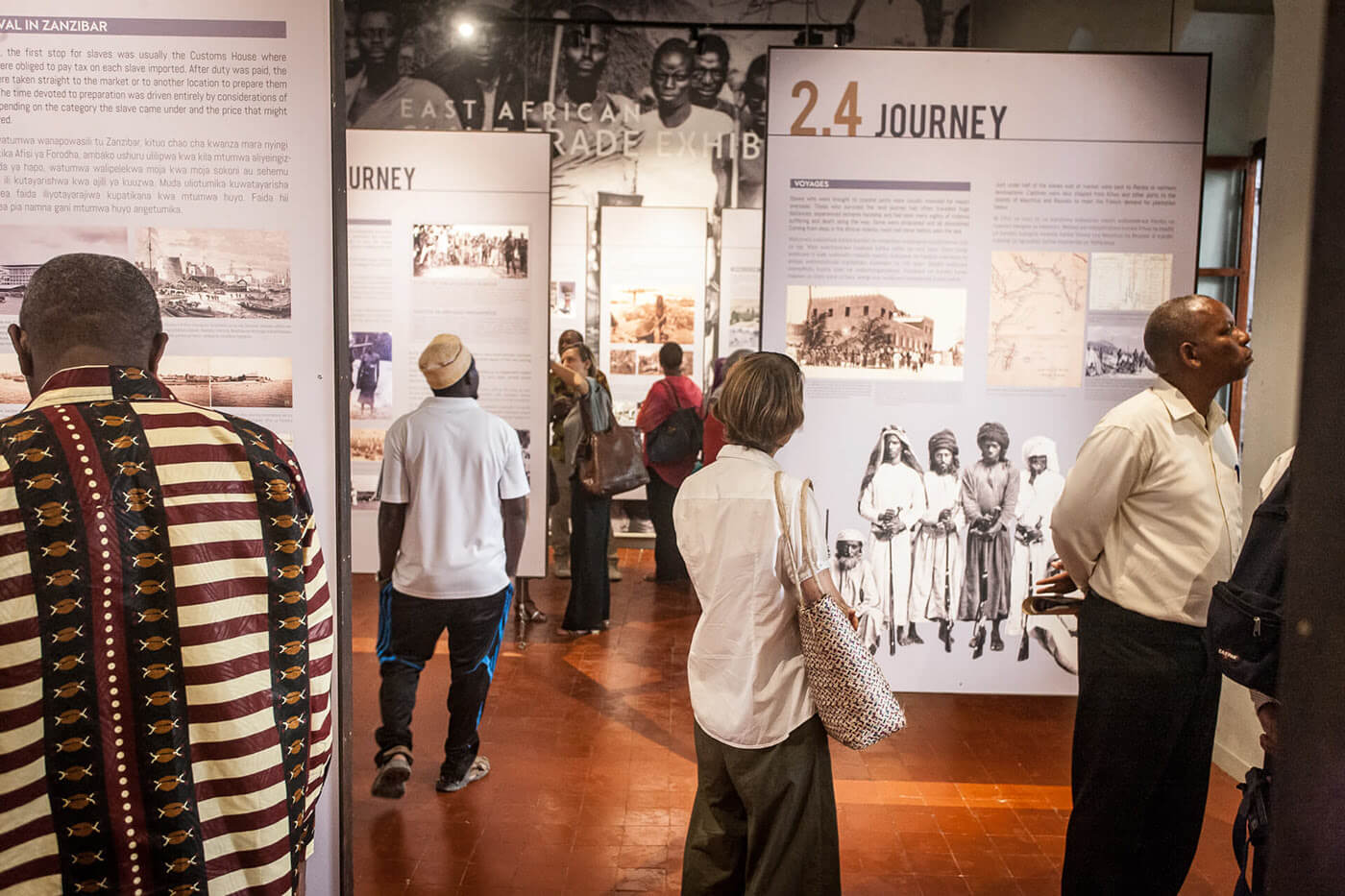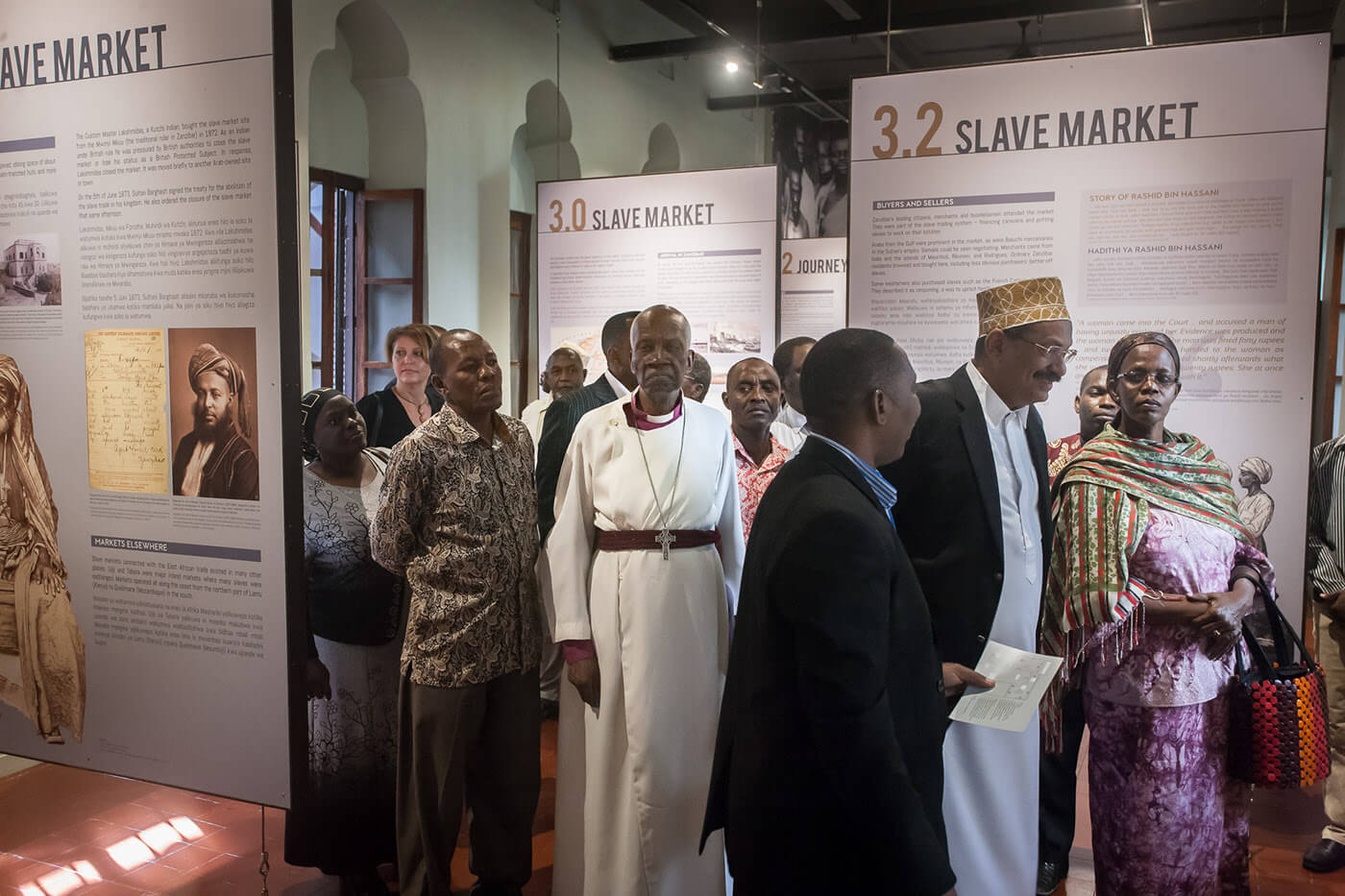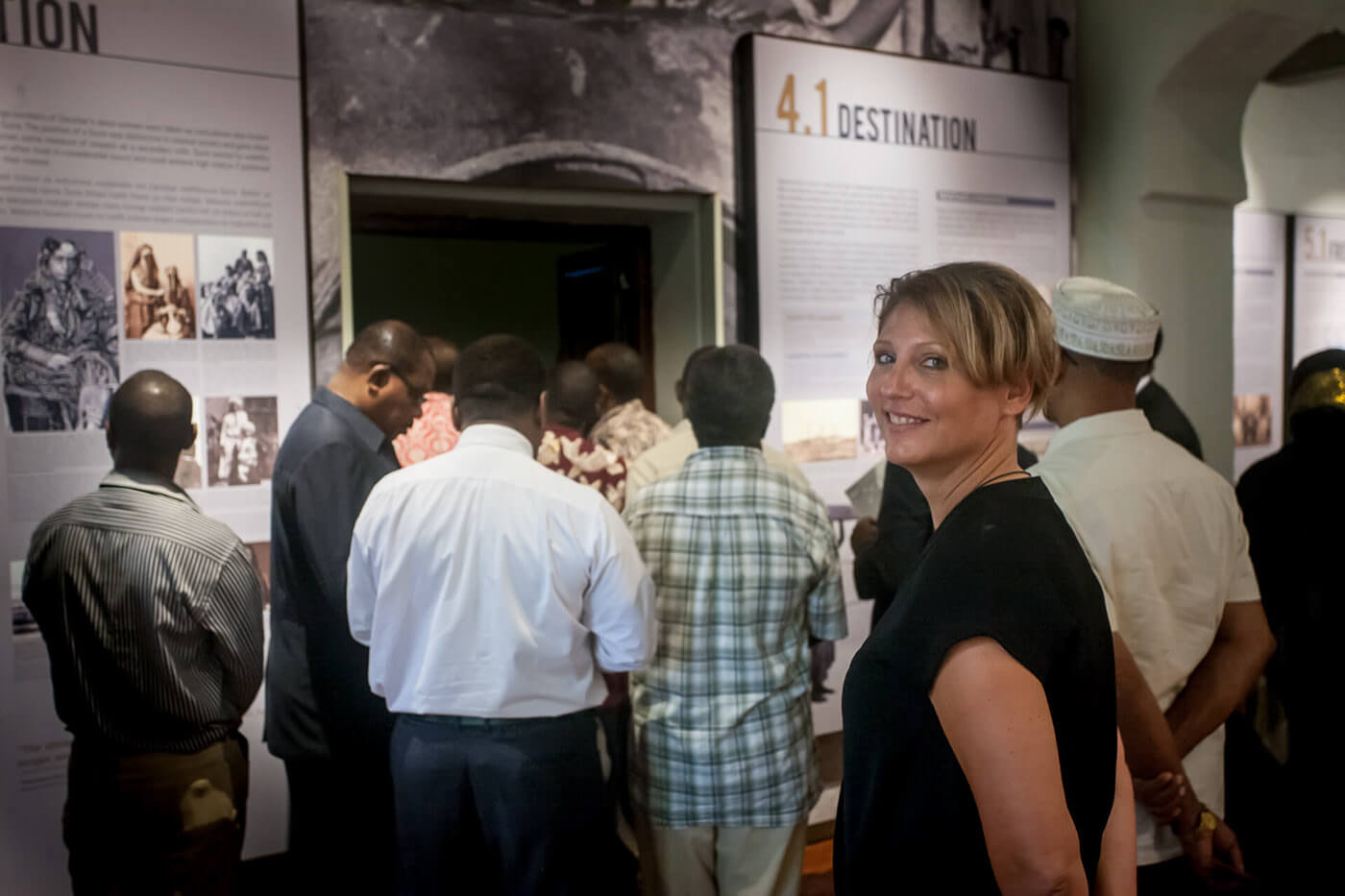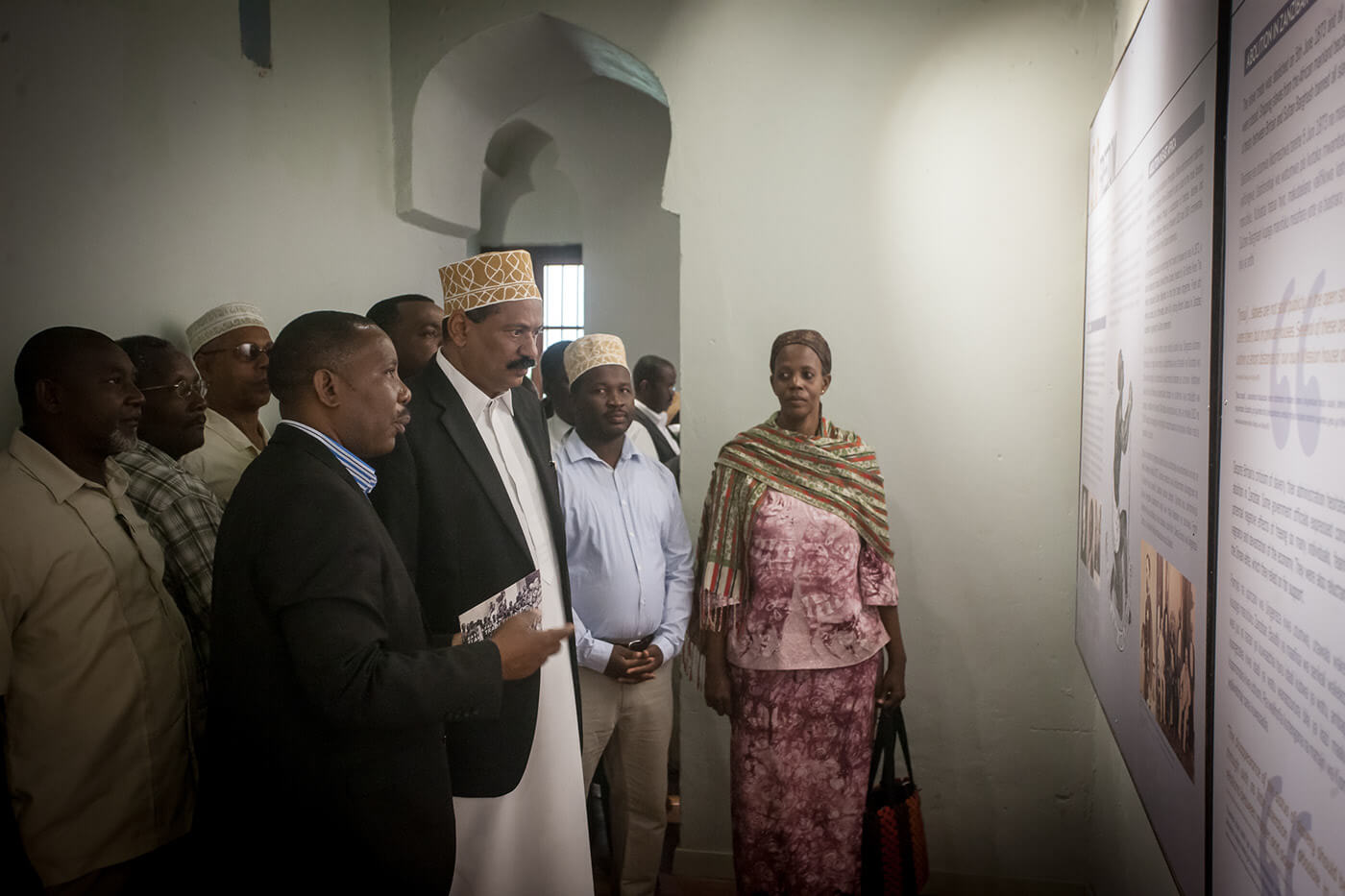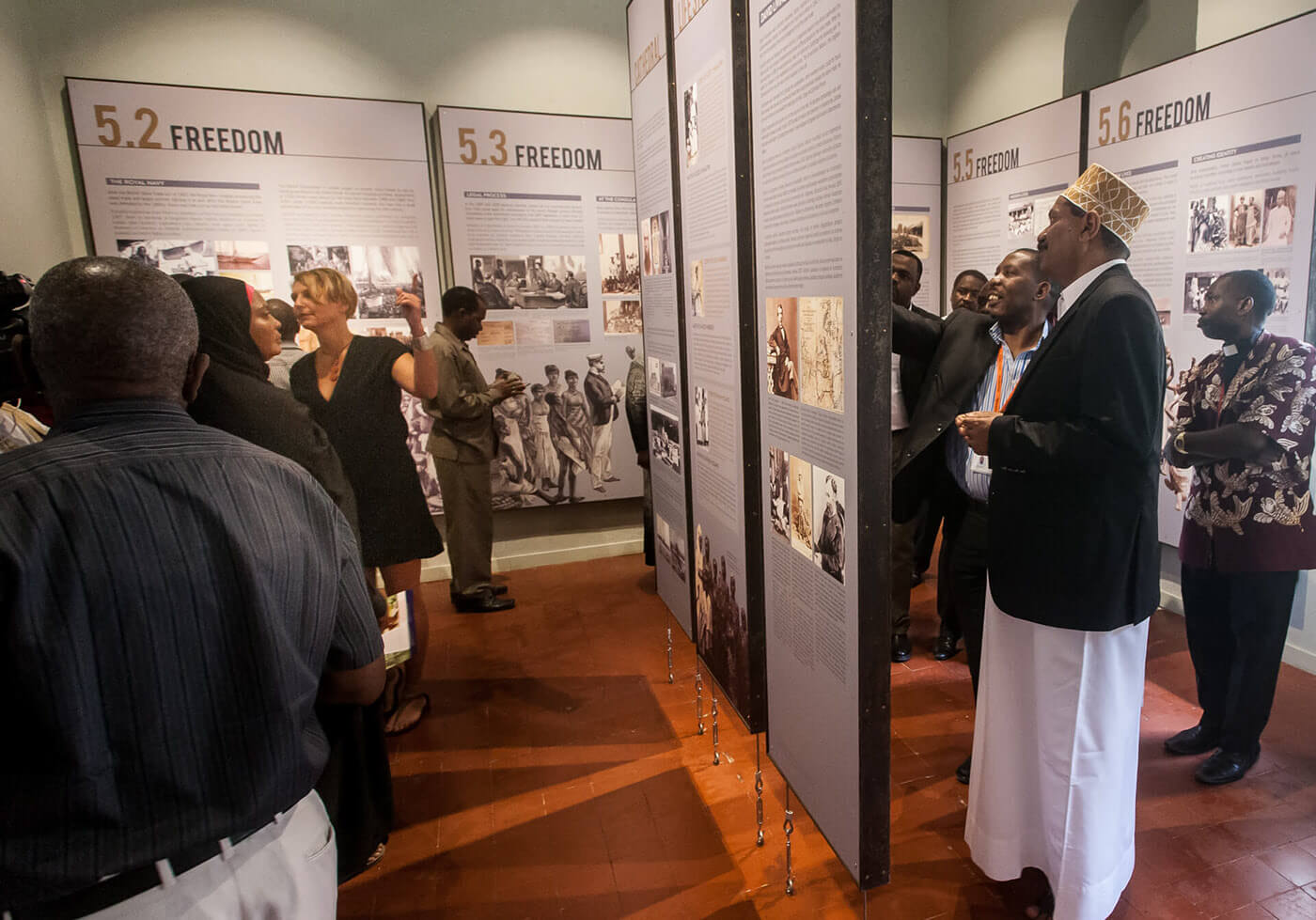PROJECT
I had the honour and the privilege to lead the creation of the heritage center and permanent East African Slave Trade Exhibit project. Funds and qualified staff were short. This left nearly every role in my hands.
The permanent exhibit is located on the site of the last official slave trade market in East Africa on the island of Zanzibar. It focuses on the height of the slave trade period from 1800 to 1909. During this time, two thirds of the island was inhabited by slaves either living there or passing through.
The exhibit is in a UNESCO heritage building, without air conditioning or consistent electricity. Faced with unique location challenges, it had to be designed to withstand time, humidity, and mishaps.
The panels were printed on coated metal plates guaranteed to not fade for fifty years. They were mounted on custom heavy steel frames. Steel beams were sunk into the ceilings and industrial cables were installed to support the weight of the panels.

